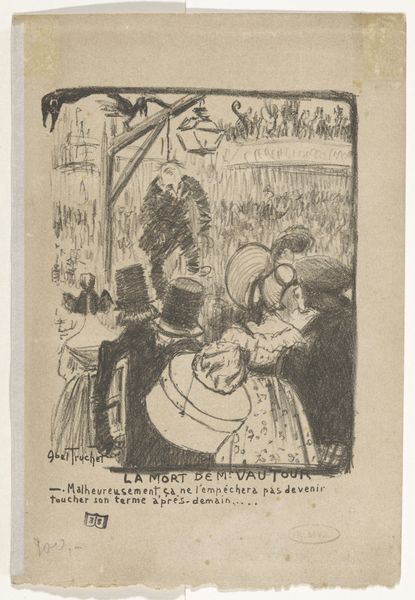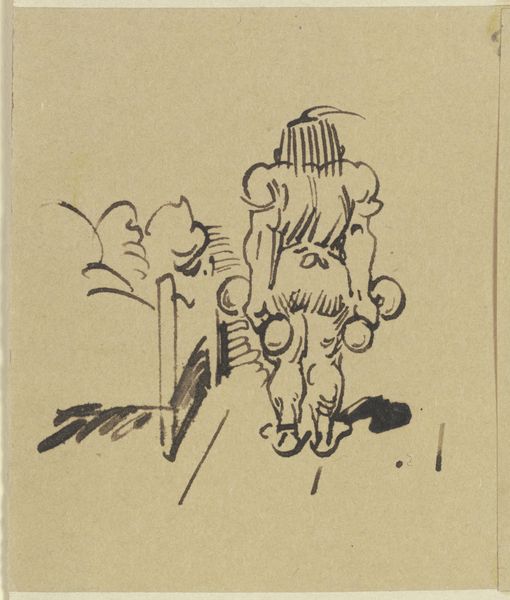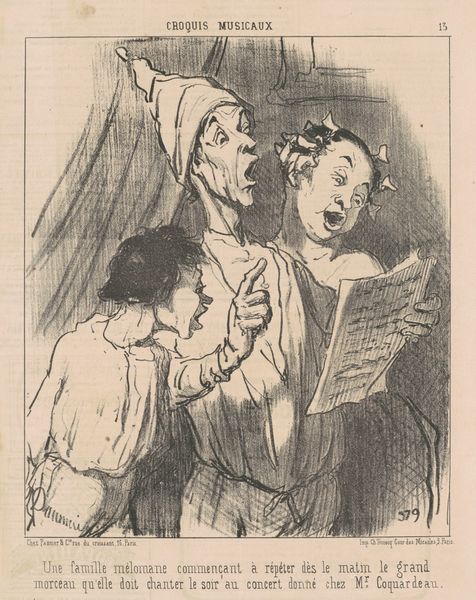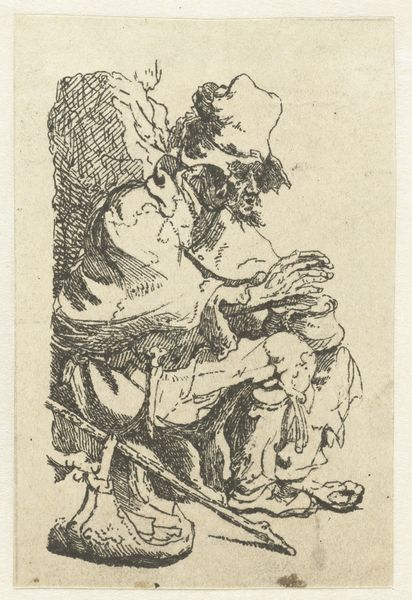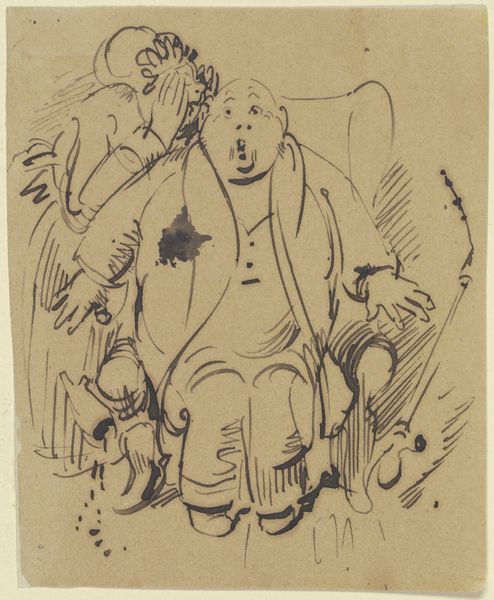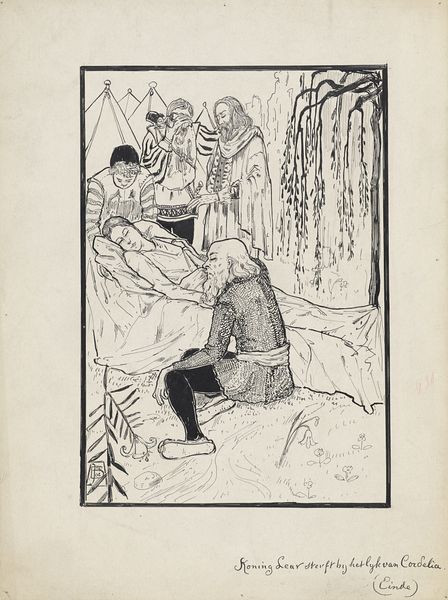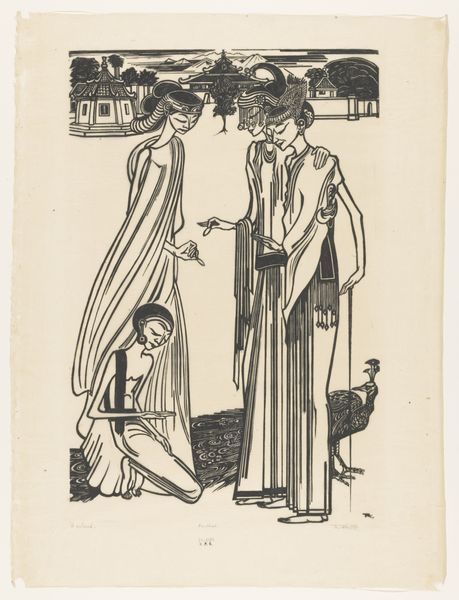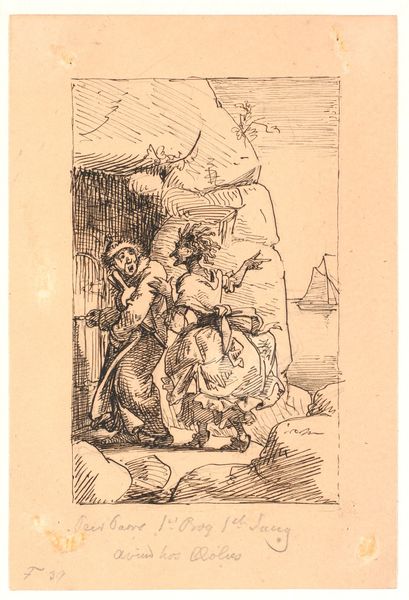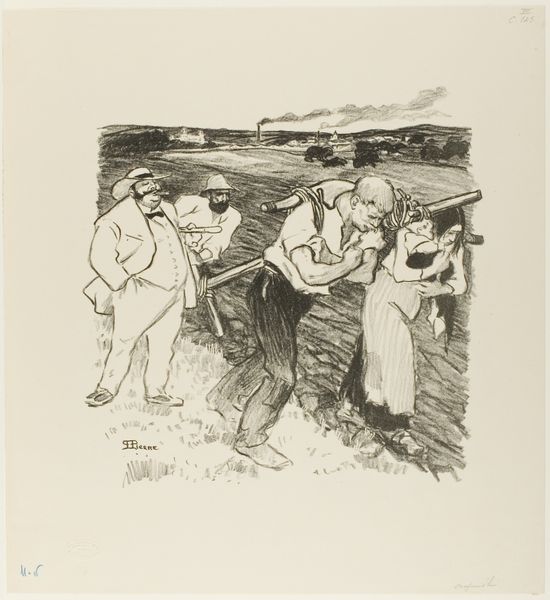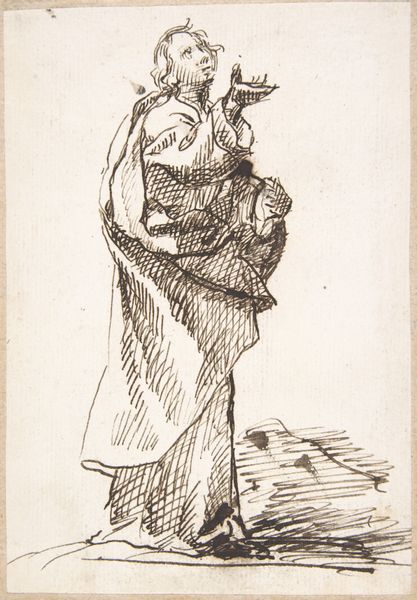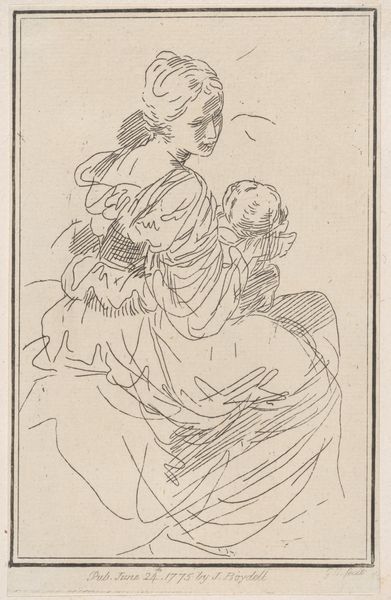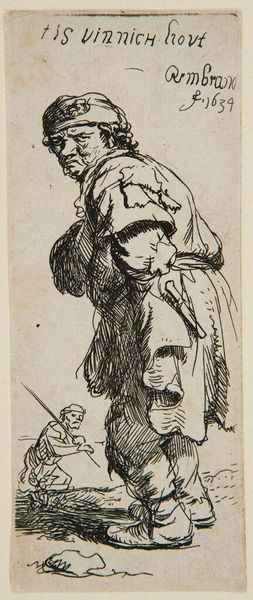
drawing, print, ink
#
drawing
#
ink drawing
#
narrative-art
# print
#
asian-art
#
ukiyo-e
#
figuration
#
ink
#
men
Dimensions: H. 14 in. (35.6 cm); W. 9 1/4 in. (23.5 cm)
Copyright: Public Domain
Curator: Looking at this ink drawing from 1808, titled "Trapping the Fox" by Utagawa Toyohiro, now housed at the Metropolitan Museum of Art, I am immediately struck by the sense of contained energy in the composition. The dark inks seem to vibrate against the white of the page. Editor: Contained energy is a perfect description! The composition is fascinating – the juxtaposition of what looks like an open, moonlit night, against the incredibly constrained scenario of capturing this fox. It seems ripe with sociopolitical tension, perhaps exploring the limits placed on individuals? Curator: The visual language of entrapment here is deeply connected to Ukiyo-e traditions. Consider the use of the fox, a figure often representing slyness, trickery, or even dangerous feminine wiles in folklore. By “trapping” this creature, what ideologies are at play? Editor: Indeed, foxes throughout various cultures embody duplicity and hidden desires, serving as symbols in the social dynamics between humans, nature, and the spiritual realm. Looking at this image, one can observe this very moment where control is being asserted. Curator: Exactly, we could examine this work through a feminist lens. What does it mean to capture something deemed "wild" or "cunning"? How has that translated into social controls imposed particularly on women or other marginalized groups? What behaviors or ideas are the characters actively subduing here, in visual terms? The haystacks themselves feel symbolic in this regard – containers for certain notions of tradition. Editor: I see in the characters the embodiment of ancient folklore around spirit possession; I also think about ritualistic performances of control, dominance, and how power is maintained through visual representations. Curator: And it's essential to remember, ukiyo-e art itself circulated within specific socio-economic contexts. Consider the merchant class consuming such imagery: were they reflecting on their own social climb through such a symbol? Or considering more ancient traditions as Japan transformed politically? Editor: This piece certainly holds enduring relevance; through a study of historical and social symbols it’s quite interesting how we arrive at questions that still echo in our world. Curator: Definitely a reminder of how symbols both shape, and are shaped by, the communities they represent.
Comments
No comments
Be the first to comment and join the conversation on the ultimate creative platform.
